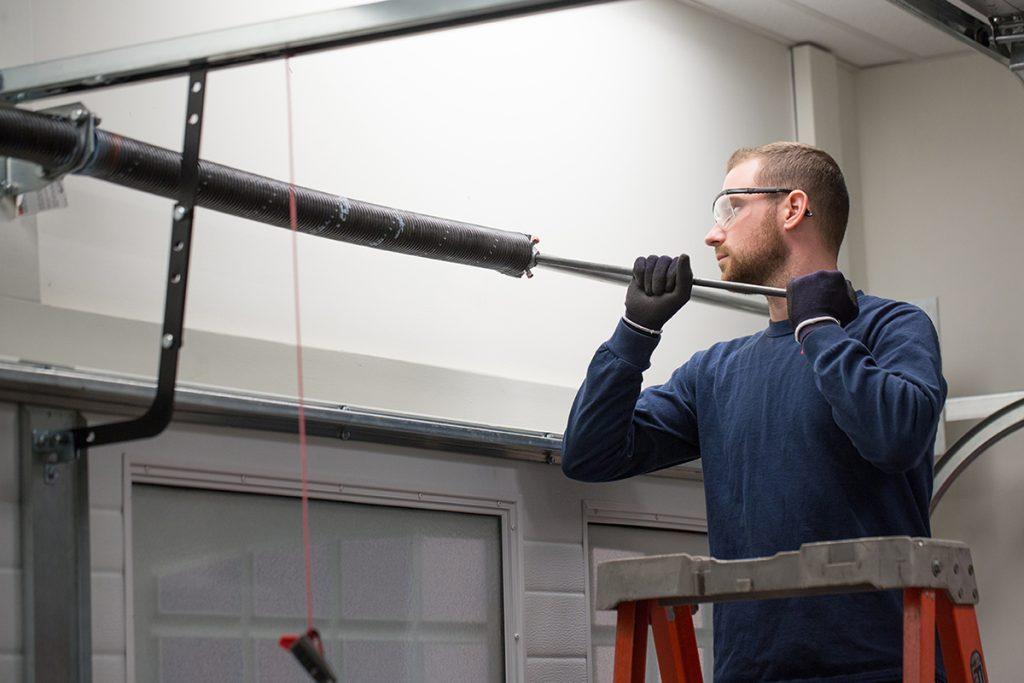Garage door springs are an essential part of any garage door. They provide the necessary force to lift and lower the door, making it easy for homeowners to access their vehicles. However, garage door springs can break over time, making it difficult or impossible to open the door manually.
If your garage door spring has broken, you may be wondering how to release the tension on a garage door spring so that you can safely remove it. While it is possible to release the tension on a garage door spring yourself, it is important to take safety precautions to avoid injury.

Safety Precautions
Before you attempt to release the tension on a garage door spring, it is important to take the following safety precautions:
- Wear safety glasses and gloves to protect your hands and eyes from injury.
- Have a helper available to assist you.
- Make sure the garage door is closed and locked.
- Release the tension on the spring slowly and carefully.
Step 1: Disengage the Garage Door Opener
The first step is to disengage the garage door opener. To do this, locate the emergency release cord or handle. This is usually located near the garage door opener. Once you have found the emergency release cord or handle, pull it to disengage the garage door opener.
Step 2: Remove the Garage Door Balance Bolts
The next step is to remove the garage door balance bolts. These bolts are located on each side of the garage door track. To remove the balance bolts, use a wrench or socket wrench. Once you have removed the balance bolts, the garage door will be supported by the garage door cables.
Step 3: Release the Tension on the Spring
To release the tension on the spring, you will need to use a winding bar. A winding bar is a long, metal bar with a hook on one end. To use a winding bar, follow these steps:
- Insert the hook of the winding bar into the end of the spring.
- Turn the winding bar in the direction that the spring was wound.
- Continue turning the winding bar until the spring is fully released.
As you turn the winding bar, the spring will slowly unwind. Be careful not to over-turn the winding bar, as this could cause the spring to break.
Additional Tips
- If you have a two-car garage, you may need to use a ladder to reach the top of the garage door.
- If the garage door is very heavy, you may need to call a professional to remove the spring.
Additional Information
- There are two types of garage door springs: extension springs and torsion springs. Extension springs are the most common type of garage door spring. Torsion springs are located at the top of the garage door and are less common.
- If your garage door spring has broken, you should replace it as soon as possible. A broken spring can be a safety hazard.
Conclusion
Releasing the tension on a garage door spring can be a challenging task. However, by following the steps outlined in this article, you can safely and successfully release the tension on the spring.
Additional Details
In Step 3, it is important to turn the winding bar slowly and carefully. This will help to prevent the spring from snapping back and causing injury.
If you are having trouble turning the winding bar, you can use a pair of vice grips to help you. Be sure to wear safety glasses when using vice grips.
Once the spring is fully released, you can remove it from the garage door. To do this, use a ladder to reach the top of the garage door. Carefully remove the spring from the track and dispose of it properly.
It is important to note that releasing the tension on a garage door spring is a dangerous task. If you are not comfortable doing it yourself, it is best to call a professional.
Here are some additional tips for safety when releasing the tension on a garage door spring:
- Work in a well-lit area.
- Have a clear path to the garage door.
- Stay away from the spring when it is under tension.
By following these safety tips, you can help to prevent injury.



Leave a Reply